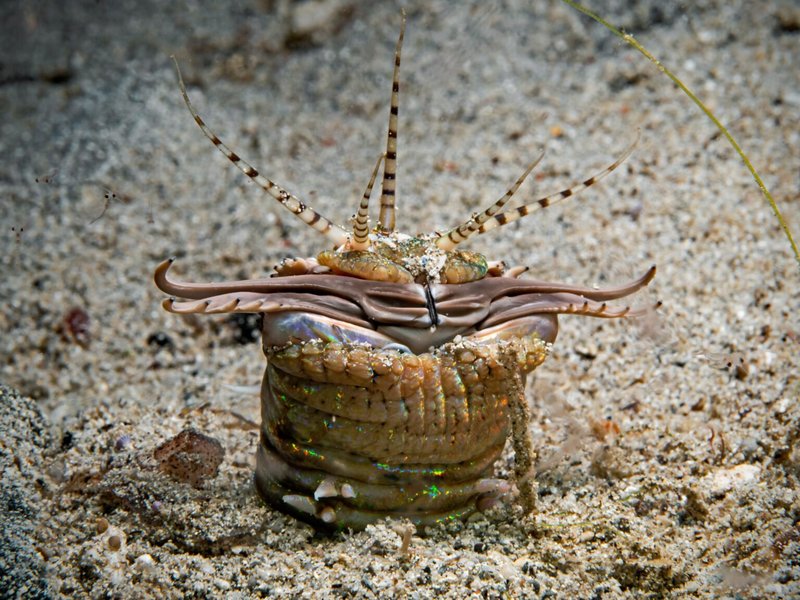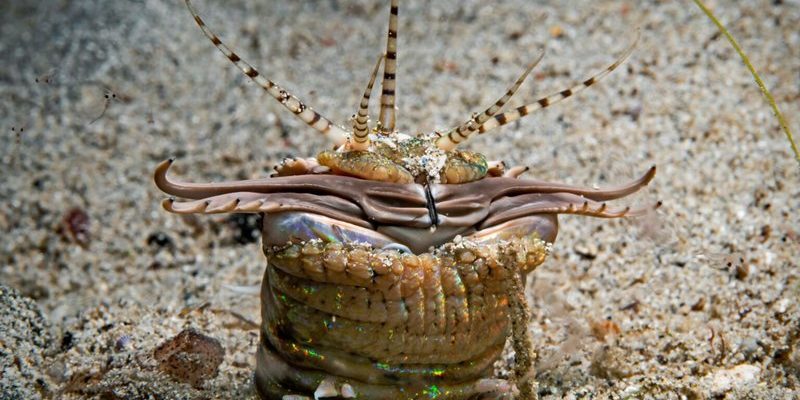
In the age of modern technology, night vision cameras provide a unique perspective on wildlife. Brands like FLIR and Bushnell have designed sophisticated cameras that can capture the activity of creatures in low light, giving us a window into their secretive lives. This is particularly important for the Bobbit worm, known scientifically as *Eunice aphroditois*, as its behavior can reveal much about the ecosystem it inhabits. Let’s dive deeper into how night cameras work and why they’re essential for observing these fascinating worms.
What Are Bobbit Worms?
Bobbit worms are long, segmented marine worms that inhabit oceanic environments, primarily in tropical and subtropical waters. They’re notorious for their predatory nature and can ambush fish and other small creatures that venture too close. When their prey comes near, they strike with lightning speed, using their sharp jaws to capture dinner.
These worms are fascinating not only for their hunting abilities but also for their unique way of life. They reside in burrows, often made from sediment and debris, camouflaging themselves perfectly. So, when researchers want to study their behavior, daytime observations can be a challenge. This is where our trusty night cameras come into play!
Understanding Night Cameras
Night cameras utilize special technology to capture images in low-light conditions. There are two primary types of night vision: **thermal imaging** and **infrared**. Thermal cameras detect heat emitted by objects, allowing them to render images even in complete darkness. Infrared cameras, on the other hand, use near-infrared light, which can illuminate subjects without disturbing them.
When monitoring Bobbit worms, thermal imaging can be particularly useful. It allows researchers to track the worms’ movements as they hunt, revealing patterns of behavior that might otherwise go unnoticed. It’s like having a superhero power—seeing what others can’t!
Setting Up Your Night Camera
So, how do you get started with monitoring Bobbit worm behavior using night cameras? First, you’ll need to choose a camera that fits your needs. Here’s a quick guide to setting up:
- Select the right camera: Look for a model with good low-light capabilities and a wide field of view.
- Find a suitable location: Ideally, set up near known Bobbit worm habitats, like rocky or sandy substrates in shallow waters.
- Secure the camera: Mount your camera in a stable position, making sure it’s protected from water and sand.
- Set the timer: Program the camera to start recording at dusk when these worms become active.
Here’s the thing: patience is crucial. It might take several nights to capture intriguing footage of the Bobbit worms in action. But with determination, you’ll uncover amazing insights into their behavior.
What to Expect When Monitoring Bobbit Worms
Once your night camera is set up, you might be wondering what kind of behavior to look out for. Bobbit worms are primarily solitary hunters, often remaining hidden until they sense prey nearby. Here are some key behaviors to expect:
- Hunting: Watch for sudden movements as the worm lunges to capture unsuspecting fish.
- Feeding: You might see the worm pulling its catch back into its burrow for a meal.
- Resting: Most of the time, these worms stay hidden, so don’t be surprised if you see little action.
By capturing this behavior on camera, you’ll gather evidence of their hunting techniques and learn more about their role in the ecosystem. It’s like piecing together a puzzle—each clip adds a new dimension to our understanding.
Data Collection and Analysis
Monitoring Bobbit worm behavior isn’t just about fun videos; it contributes to scientific research. When you gather footage, consider how to analyze this data effectively. Here are a few tips:
- Record timestamps: Note the time of day when specific behaviors occur. This can help identify patterns.
- Take notes: Keep a journal of interesting observations, such as prey types or interaction with other marine creatures.
- Share your findings: Consider collaborating with marine biologists or joining online forums where you can share your insights.
By taking the time to analyze the data, you contribute valuable information that could inform conservation efforts or deepen our understanding of these mysterious creatures’ ecological roles.
Common Challenges and How to Overcome Them
While monitoring Bobbit worms with night cameras can be a rewarding experience, you might face some challenges along the way. Here are a couple of common hurdles and how to tackle them:
1. **Camera malfunctions**: Sometimes, cameras may not capture footage correctly due to low battery or connectivity issues. Regularly check battery levels and ensure all connections are secure. Don’t hesitate to perform a quick reset if things aren’t working right.
2. **Environmental factors**: Weather and water conditions can affect visibility and behavior. Heavy currents or high tides might deter Bobbit worms from surfacing. If you notice poor conditions, try adjusting the camera’s angle or moving it to a more sheltered area.
By anticipating these challenges, you can make informed adjustments and continue gathering valuable data.
The Importance of Monitoring Bobbit Worms
You might be wondering why monitoring Bobbit worms matters. These creatures play a significant role in their ecosystem, influencing the population of prey species and contributing to the health of coral reefs. Understanding their behavior helps researchers and conservationists learn more about marine biodiversity and the impacts of environmental changes.
As we monitor Bobbit worms through night vision cameras, we not only observe their fascinating behaviors but also contribute to a greater understanding of ocean health. Your observations might even inspire conservation efforts or lead to discoveries that change how we view these intriguing creatures.
In closing, utilizing night cameras to monitor Bobbit worm behavior opens up a world of possibilities. From understanding their hunting techniques to observing their interactions, you’re not just watching wildlife—you’re participating in marine research. So grab your camera, set up some late-night watch sessions, and get ready to uncover the secrets of the deep!

